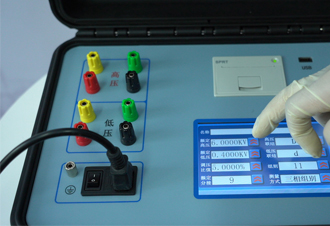TEL:
+86-0312-3189593
 English
English

Telephone:0312-3189593

Email:sales@oil-tester.com
7 月 . 12, 2024 06:11
Back to list
Evaluation of transformer performance under maximum capacity load conditions for quality assurance.
A full load test of a transformer is a crucial step in ensuring its efficiency and reliability. This test involves applying a rated load to the transformer for an extended period of time to determine its performance under these conditions. By conducting a full load test, engineers can assess the transformer's ability to handle its maximum rated capacity and identify any potential issues that may arise during operation.
During a full load test, the transformer is connected to a load bank that simulates the actual load that it will be expected to carry in real-world applications. The load bank is gradually increased until it reaches the transformer's rated capacity, and then held at that level for a specified period of time. This allows engineers to monitor the transformer's temperature, voltage, and current levels to ensure that they are within acceptable limits.
One of the key objectives of a full load test is to verify the transformer's efficiency. Efficiency is a measure of how effectively the transformer converts electrical energy from one voltage level to another. A transformer with high efficiency will waste less energy in the form of heat and will be more cost-effective to operate. By conducting a full load test, engineers can determine the transformer's efficiency under maximum load conditions and take corrective action if necessary.
In addition to efficiency, a full load test also helps to identify any potential overheating issues that may occur during operation

full load test of transformer. Transformers generate heat as a result of the electrical losses that occur during the conversion of energy. If a transformer is unable to dissipate this heat effectively, it may overheat and fail, leading to costly downtime and repairs. By monitoring the transformer's temperature during a full load test, engineers can ensure that it is operating within safe limits and make adjustments as needed to prevent overheating. Furthermore, a full load test can also reveal any voltage or current fluctuations that may occur under load. These fluctuations can be caused by a variety of factors, such as imbalances in the load, poor connections, or faulty components. By monitoring the transformer's performance during a full load test, engineers can identify and address any issues that may affect its ability to deliver a stable voltage and current output. Overall, a full load test of a transformer is an essential part of its commissioning process. By subjecting the transformer to its maximum rated capacity and monitoring its performance under load, engineers can ensure that it is capable of meeting the demands of its intended application. This test helps to verify the transformer's efficiency, reliability, and safety, and ensures that it will operate effectively for years to come.

full load test of transformer. Transformers generate heat as a result of the electrical losses that occur during the conversion of energy. If a transformer is unable to dissipate this heat effectively, it may overheat and fail, leading to costly downtime and repairs. By monitoring the transformer's temperature during a full load test, engineers can ensure that it is operating within safe limits and make adjustments as needed to prevent overheating. Furthermore, a full load test can also reveal any voltage or current fluctuations that may occur under load. These fluctuations can be caused by a variety of factors, such as imbalances in the load, poor connections, or faulty components. By monitoring the transformer's performance during a full load test, engineers can identify and address any issues that may affect its ability to deliver a stable voltage and current output. Overall, a full load test of a transformer is an essential part of its commissioning process. By subjecting the transformer to its maximum rated capacity and monitoring its performance under load, engineers can ensure that it is capable of meeting the demands of its intended application. This test helps to verify the transformer's efficiency, reliability, and safety, and ensures that it will operate effectively for years to come.
Latest news
-
Differences between open cup flash point tester and closed cup flash point testerNewsOct.31,2024
-
The Reliable Load Tap ChangerNewsOct.23,2024
-
The Essential Guide to Hipot TestersNewsOct.23,2024
-
The Digital Insulation TesterNewsOct.23,2024
-
The Best Earth Loop Impedance Tester for SaleNewsOct.23,2024
-
Tan Delta Tester--The Essential Tool for Electrical Insulation TestingNewsOct.23,2024





